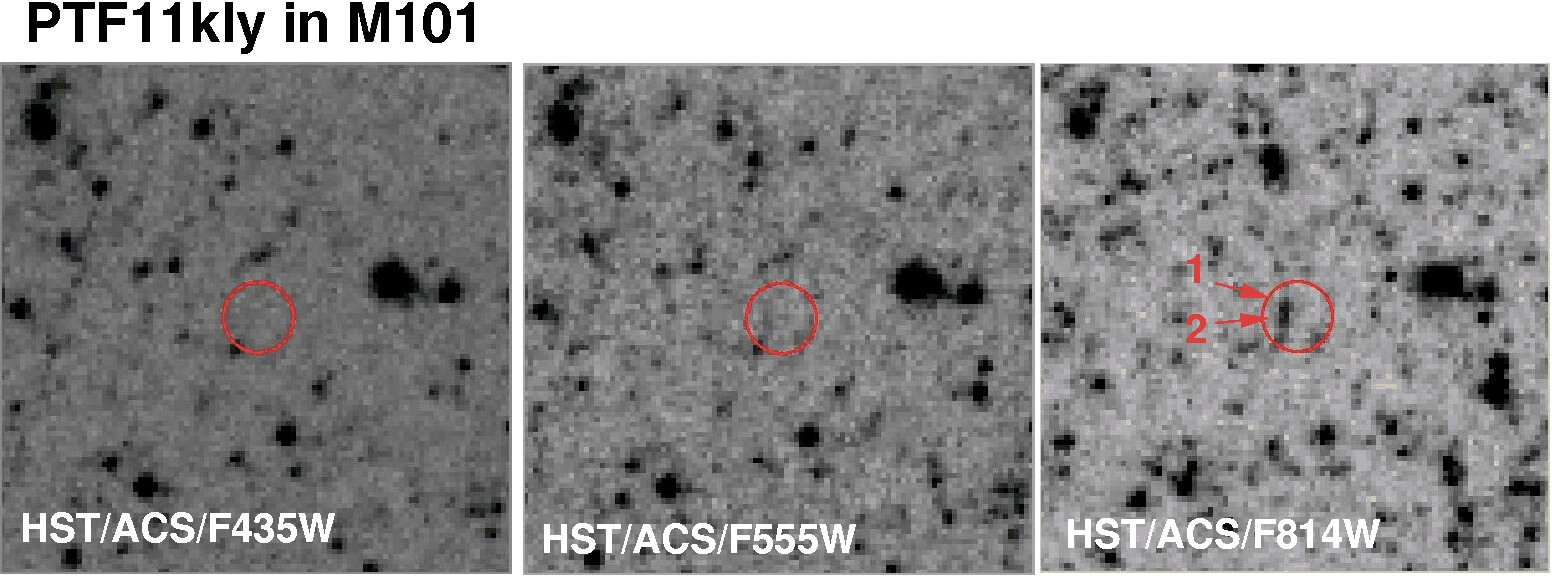The supernova discovered on August 25 is relatively bright, which can be seen even with an amateur telescope

Amir Barnett, Ilan Ramon Center for Youth Seeking Physics.
The galaxy M-101 is one of the most impressive galaxies in the Missier catalog of galaxies, its distance from us is so small that when we look at it it looks like it was only 21 million years ago, the blink of an eye on an astronomical scale.
Because of its small distance from us, it is sometimes possible to distinguish individual stars in front of the galaxy using the most advanced telescopes in the world. This time, as with most of the supernovae we see, this is a region where no star has been seen before, even in Hubble Space Telescope photographs (pictured).
The thing we didn't see there was a white dwarf, what is sometimes called a "diamond star", this means that a significant part of the white dwarfs contain relatively large amounts of carbon. That white dwarf accumulated around it a sufficient amount of matter that upset its equilibrium, an equilibrium between the force of gravity and the electrical repulsion between the electrons (for grammarians - degenerate electrons).
As soon as a large enough amount of matter has been collected and the force of gravity exceeds the repulsion of the electrons, the white dwarf collapses, in this collapse an enormous amount of energy is released to such an extent that the illumination of a single star exceeds a billion times the illumination of the Sun. In the case of sn2011fe the star that was there will brighten 10,000 times and even more.
The great uniqueness of this supernova is its apparent brightness, apparent brightness is the rating given to various celestial bodies and indicates how bright or pale they appear to an observer from Earth, this is in contrast to the illumination we referred to earlier. According to various reports sn2011fe has so far reached a magnitude of 9.9, 40 times fainter than the faintest star we can see with the unaided eye under a pitch-black sky, but bright enough to be seen through an amateur telescope even from outside the city. At the beginning of June, a supernova of a different type exploded in the slightly more distant galaxy M-51, that supernova reached magnitude 13 and was considered very bright even though it was 600 times fainter than the limit of our visual ability. Attached is a photo of the supernova in M-51 as taken from the Ilan Ramon Center for Youth Seeking Physics.
Supernovae of this type are of great importance to science, since this is the point where the star goes out of equilibrium. Astronomers assume that these explosions occur under very similar conditions to each other, and therefore they are used as "standard candles", that is, bodies that shine with the same intensity. Based on this assumption, it is possible to calibrate the distance measurements that are also made with different methods. The American Association of Variable Star Observers published a graph showing the change in brightness of the supernova since its discovery on August 25: http://www.aavso.org/lcg/plot?auid=000-BKD-525&starname=SN%202011FE&lastdays=21&start=&stop=2455814.71146&obscode= &obscode_symbol=2&obstotals=yes&calendar=calendar&forcetics=&grid=on&visual=on&r=on&bband=on&v=on&pointsize=1&width=900&height=600&mag1=&mag2=&mean=&vmean=
Since the light of the supernova took over 20 million years to reach us, it is clear that at these moments the remnants of the explosion look completely different. According to the leading theories, we believe that after a Type Ia supernova explosion there is no remnant left such as an oriented neutron star that the amount of energy released is large enough to completely disintegrate the white dwarf. The speed of expansion of the remnants of the star reaches a few percent of the speed of light, these materials are distributed into space and new solar systems are formed from them. In human history so far there have been eight cases where supernovae were bright enough to be seen by humans who left evidence of this in writings, telescopic observations allow us to see the remnants in the entire spectrum and to be impressed by the beauty created by such a massive explosion.
Photographs of supernova remnants:
Tycho's Supernova Remnant In 1572 the astronomer Tycho Braha observed and recorded this supernova. Today a connection of photographs at different wavelengths yielded this spectacular photograph:
A photograph of the supernova in M-51 taken from the Ilan Ramon Center for Youth Seeking Physics.

2 תגובות
Avi,
By the way, please read the comments
https://www.hayadan.org.il/romantic-sunset-0509118/
hello to my father,
I would like to correct what is written in the article regarding the cause of the explosion of the dwarf as a type Ia supernova.
The reason for the type Ia supernova explosion is not because "... once a large enough amount of matter has been collected and the force of gravity exceeds the repulsion of the electrons, the white dwarf collapses, in this collapse a huge amount of energy is released...". Adding mass to the dwarf causes its compression and creates suitable conditions for carbon fusion in its center. Whereas the burning of carbon that occurs when the material of the star is in a degenerate state. The star is not enough to react and spread out to regulate the burning rate and the fast and violent burning explodes the dwarf. In short, the explosion was caused by the ignition of nuclear fusion of degenerate matter and not by collapse.
What is said for Eyal is only true for a carbon-oxygen dwarf. An oxygen-neon-magnesium dwarf will collapse and become a neutron star.
All the best,
Asaf